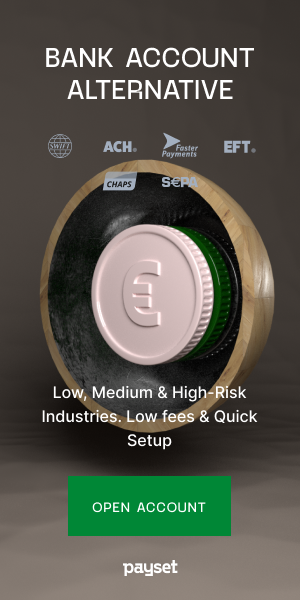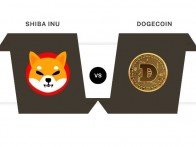
Defi Crash: Has the Bubble Popped, Or Is The Market Just Trimming The Fat?
Oct 28, 2020, 6:23PM by Chris Madill
by Chris Madill
DeFi markets have turned south as investors become weary of the skyrocketing hype and risks involved with crypto's newest "next big thing".
It’s been a tough week for Decentralized Finance (DeFi) related tokens as token values hesitate to post gains against massive losses in the first week of October. Index leading projects such as Uniswap, Chainlink, Aave, and Synthetix are down nearly half of their YTD highs, and some smaller projects are simply vanishing from the face of the Earth as investors reevaluate the efficacy of the DeFi market.
A large driver behind the downward momentum is all too familiar in the forum of crypto-finance - Scams. Reminiscent of the ICO boom of 2017, DeFi exists in a market paradigm where project start-up costs are very low, enabling nefarious actors to create projects with the intention of siphoning funds either through “rug-pulling” or fake presales. The likelihood of being scammed has become an obvious deterrent for new investors, making it difficult for legitimate new projects to gain enough market confidence to get off the ground. As new capital injection slows in DeFi markets, prices cool and the whole market segment suffers as the strong fundamentals behind the technology give way to the age-old market dynamics that drive falling values amidst fear and uncertainty.
Welcome to the death of 95% of all #DeFi bye bye food coins! I knew this bubble would pop, if you didn't well wake up reality is a bitch! pic.twitter.com/KUFVZK1rnT
— Joel - Coach K (@Coachkcrypto) October 7, 2020
Scams, and the associated risks, are not the only driver behind the drop in market capitalization for the DeFi space. While the two tweets above are only a snapshot of what critics of the DeFi market are saying online, it is easy to see that many crypto-pundits have been expecting the DeFi bubble to pop for quite some time. The debate rages on in the halls of discord servers and subreddits, as to whether or not DeFi has the fundamentals needed to make good on its promise to redefine how we use finance. Faulty smart contracts, “over-hype”, bad actors, ill-conceived projects, and volatile market conditions undermine DeFi at every turn, and we all know how fickle crypto markets can be, especially during the “growing pains” of new technologies or concepts.
Still, the DeFi market is far from washed-out, and a bubble popping in the world of crypto is often just a self-correction as over-hyped concepts and projects come back to earth. DeFi hasn’t left for good, and unlike the ICO boom of 2017, DeFi has strong fundamentals and a long list of potentially game-changing applications. While the rebound of DeFi prices hasn’t been hair-raising, many players in the space are chugging along on a slow upward trend since the “crash” of October 8th. As with all things crypto, these types of corrections are a necessary function of market dynamics that move at the speed of light and feed off of misinformation, FOMO, and over-eager investors looking for the next moonshot.
Maybe Yield Farming is to Blame?
The most tangible reason for the price-cooling is found when examining the amount of yield that DeFi tokens can produce for their holders. “Yield-farming” is the crypto-geek term used to describe the act of loaning out crypto assets on various DeFi platforms in exchange for staggeringly high-interest rates. To give a simple analogy, buying BTC is not yield farming, but if you were to loan out your BTC on a DeFi lending platform for a return, then you would be yield farming.
For some lenders, yield farming far outpaces the price appreciation of the tokens they are lending out, giving crypto investors the opportunity to multiply their gains beyond the simple trading of tokens. This concept is largely what has driven the surge of interest and value in DeFi markets, but as outlined in a comprehensive report by blockchain and finance firm SEBA, the “golden hour” of yield farming will be short-lived:
“Yield farmers made money by hopping from one protocol to another. As long as there are buyers for new protocol tokens, yield farmers can continue jumping among protocols. When buyers stop accepting the other side of the trade, this deranged activity will be arrested. Clearly, this trend is not sustainable. A significant correction in markets will stop buyers from buying tokens from new forks that are not distinct from their predecessors and thus have no defensibility.” - SEBA, “Defi: What Happens When the Music Stops?”
As more and more cryptonauts flock to DeFi platforms to loan out their digital value in exchange for huge returns via yield-farming, the supply of yield farmers will eventually exceed the demand for liquidity. In other words, the DeFi bubble is self-limiting, and we may have reached that point sooner than we thought. While this doesn’t mean the idea of yield farming is flawed, it does mean that the DeFi market has fallen victim to greed and over-zealous market investors who are looking to capitalize on the short-lived hype that surrounds a nascent market segment.
For those of us who have been in the world of crypto for a while, this is not a new outcome. Almost every single good idea in the world of crypto has, at one time, looked like a bad idea. Even Bitcoin was once thought of as a small, ill-conceived project that could only ever be used to buy drugs or pay off illegal debts. The Bitcoin bubble has popped more times than this crypto writer cares to remember, and yet, the asset remains the single most powerful financial concept of the new millennium. There are some purists out there who would like to declare DeFi dead, but if history has taught us anything, it’s that the good ideas will weather the storm. Keep your eyes on the space, because the cull is coming, and the survivors will be worth watching.
Disclaimer: information contained herein is provided without considering your personal circumstances, therefore should not be construed as financial advice, investment recommendation or an offer of, or solicitation for, any transactions in cryptocurrencies.

















